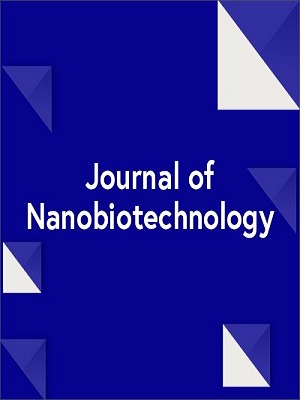利用化疗、光疗和免疫疗法靶向乳腺癌肿瘤的功能化脂质体的制备和效果
IF 10.6
1区 生物学
Q1 BIOTECHNOLOGY & APPLIED MICROBIOLOGY
引用次数: 0
摘要
针对程序性细胞死亡配体1/程序性细胞死亡-1(PD-L1/PD-1)途径的乳腺癌治疗取得了重大进展。BMS-202(一种小分子 PD-L1 抑制剂)可诱导 PD-L1 二聚化,从而阻断 PD-1/PD-L1 的相互作用,使 T 细胞介导的免疫反应能够杀死肿瘤细胞。然而,单纯的免疫疗法效果有限。临床批准的光动力疗法(PDT)可激活免疫,并选择性地靶向恶性细胞。然而,光动力疗法会加重缺氧,从而影响疗效并促进肿瘤转移。我们设计了一种肿瘤特异性递送纳米脂质体平台,其中封装了对缺氧敏感的抗肿瘤药物替拉帕胺(TPZ)和小分子免疫抑制剂 BMS。新型吲哚菁绿(IR820)负载的聚亚乙基亚胺叶酸(PEI-FA)通过静电作用与TPZ和BMS负载的脂质体复合,形成脂质纳米复合体。该纳米平台可通过近红外照射诱导光导放疗,形成缺氧的肿瘤环境并激活原药 TPZ,从而实现高效化疗。体外和体内研究表明,PDT、化疗和免疫疗法联合使用对远处肿瘤和肺转移灶的消退有很好的效果,为制备治疗乳腺癌的靶向药物提供了一种参考方法。本文章由计算机程序翻译,如有差异,请以英文原文为准。
Preparation and effects of functionalized liposomes targeting breast cancer tumors using chemotherapy, phototherapy, and immunotherapy
Breast cancer therapy has significantly advanced by targeting the programmed cell death-ligand 1/programmed cell death-1 (PD-L1/PD-1) pathway. BMS-202 (a smallmolecule PD-L1 inhibitor) induces PD-L1 dimerization to block PD-1/PD-L1 interactions, allowing the T-cell-mediated immune response to kill tumor cells. However, immunotherapy alone has limited effects. Clinically approved photodynamic therapy (PDT) activates immunity and selectively targets malignant cells. However, PDT aggravates hypoxia, which may compromise its therapeutic efficacy and promote tumor metastasis. We designed a tumor-specific delivery nanoplatform of liposomes that encapsulate the hypoxia-sensitive antitumor drug tirapazamine (TPZ) and the small-molecule immunosuppressant BMS. New indocyanine green (IR820)-loaded polyethylenimine-folic acid (PEI-FA) was complexed with TPZ and BMS-loaded liposomes via electrostatic interactions to form lipid nanocomposites. This nanoplatform can be triggered by near-infrared irradiation to induce PDT, resulting in a hypoxic tumor environment and activation of the prodrug TPZ to achieve efficient chemotherapy. The in vitro and in vivo studies demonstrated excellent combined PDT, chemotherapy, and immunotherapy effects on the regression of distant tumors and lung metastases, providing a reference method for the preparation of targeted agents for treating breast cancer.
求助全文
通过发布文献求助,成功后即可免费获取论文全文。
去求助
来源期刊

Journal of Nanobiotechnology
BIOTECHNOLOGY & APPLIED MICROBIOLOGY-NANOSCIENCE & NANOTECHNOLOGY
CiteScore
13.90
自引率
4.90%
发文量
493
审稿时长
16 weeks
期刊介绍:
Journal of Nanobiotechnology is an open access peer-reviewed journal communicating scientific and technological advances in the fields of medicine and biology, with an emphasis in their interface with nanoscale sciences. The journal provides biomedical scientists and the international biotechnology business community with the latest developments in the growing field of Nanobiotechnology.
 求助内容:
求助内容: 应助结果提醒方式:
应助结果提醒方式:


